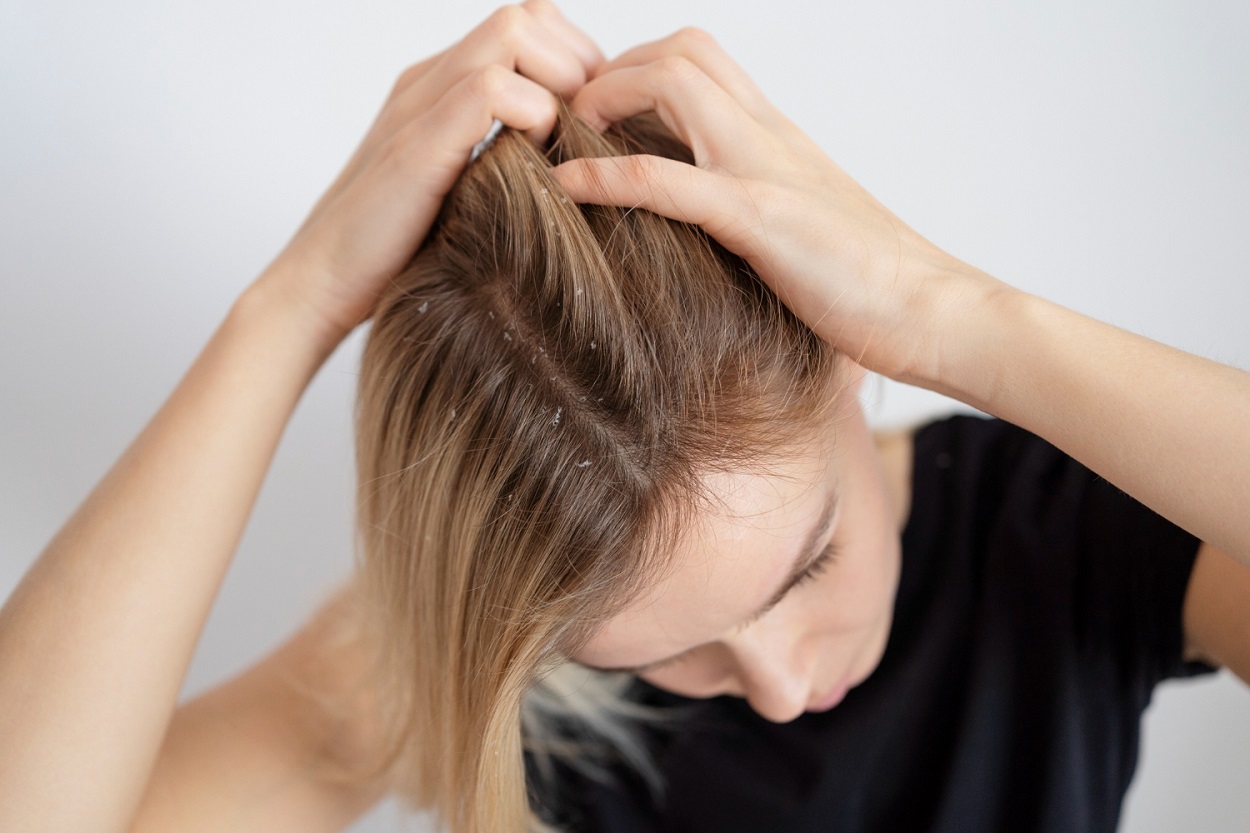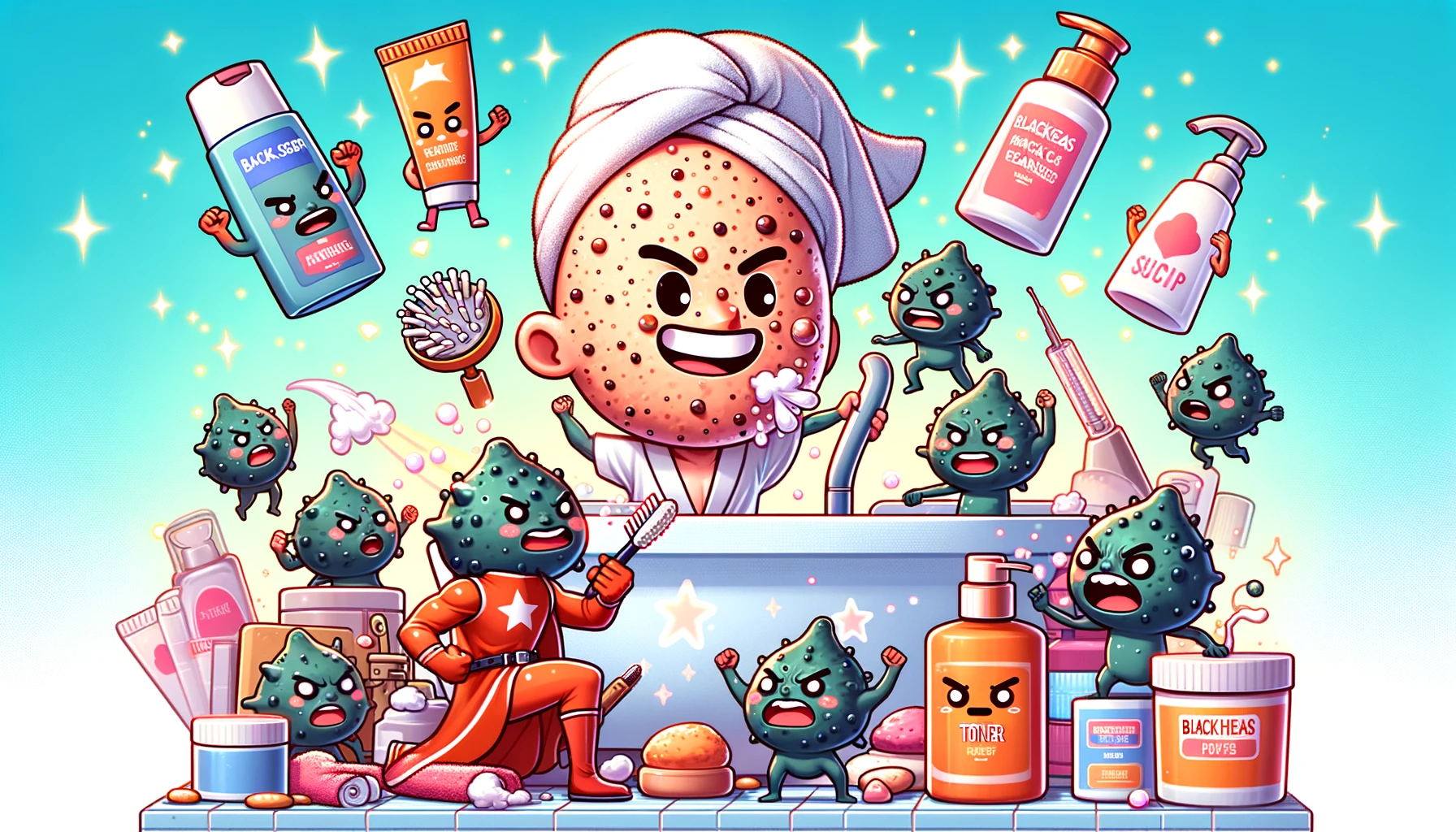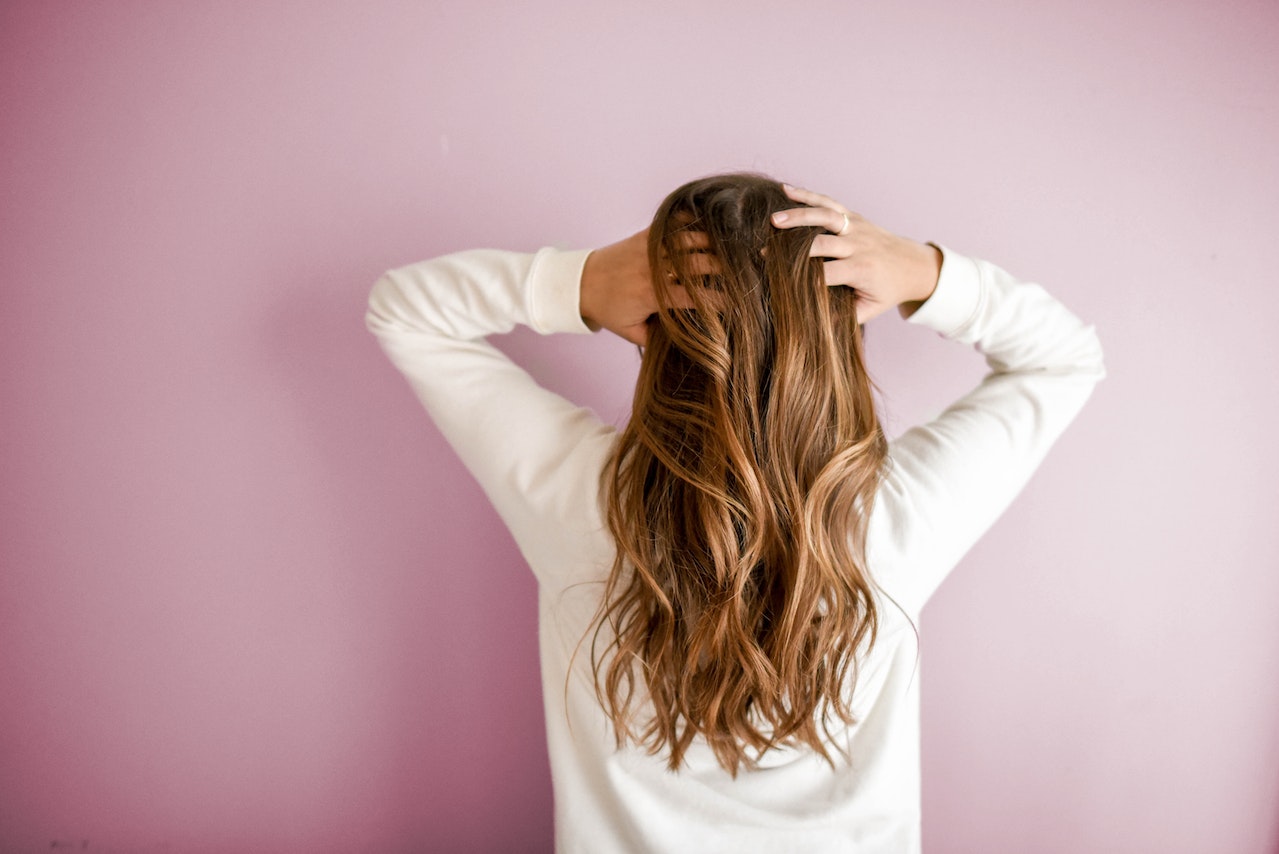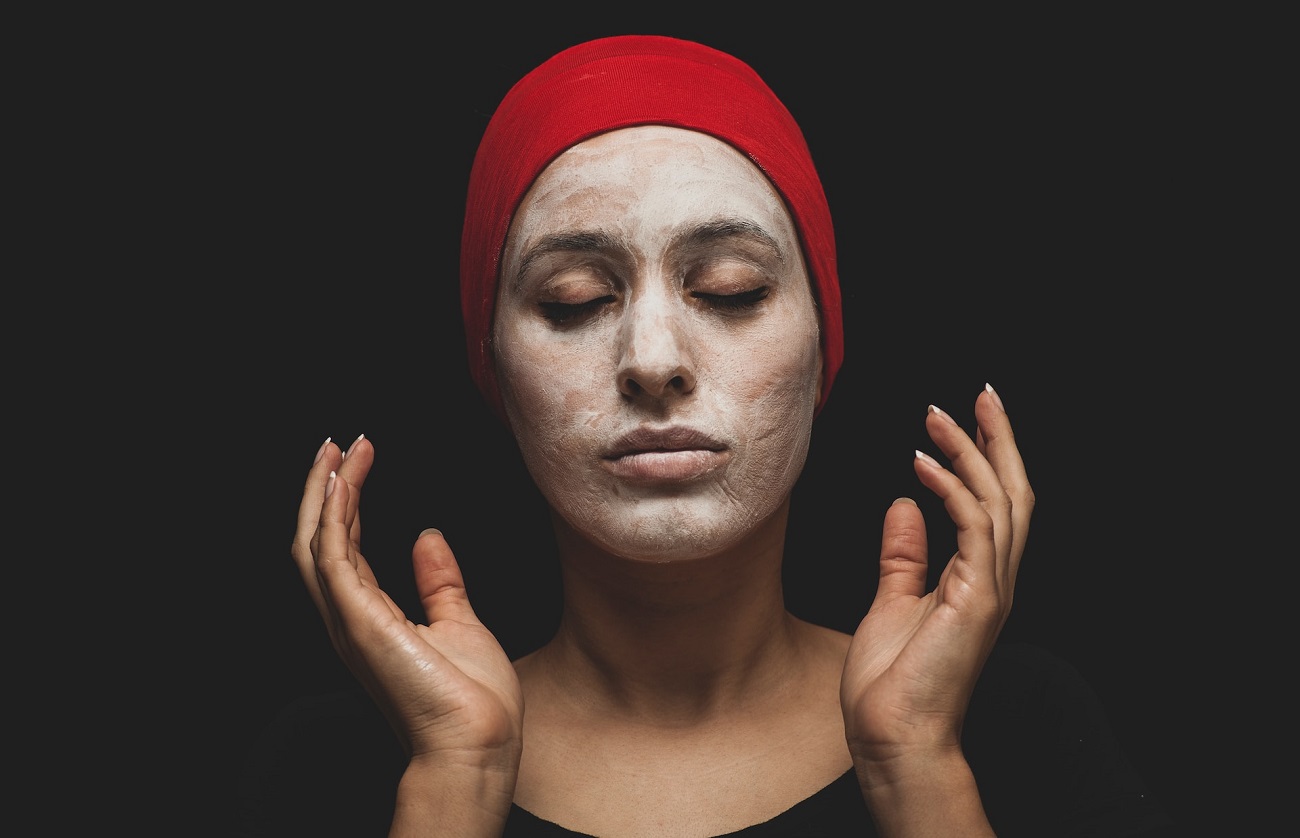Image by Freepik
Well, hello there, Glorious Manes and Balding Badgers! If you’ve clicked on this article, you’re either curious, desperate, or have made peace with the fact that you’re essentially a human snow globe. But fear not, for today, I present to you the ultimate guide to “How to Rid Yourself of Dandruff, the Glitter No One Asked For.”
Understanding Dandruff
Before we dive into the depths of dandruff debacles, let’s first understand this flaky foe. Dandruff, those pesky white flakes that love to gather on your shoulders, is a common scalp condition that affects nearly half the world’s post-puberty population.
At its core, it’s an overproduction and shedding of skin cells from the scalp. While the exact cause can vary, the usual suspects include an overgrowth of the yeast-like fungus called Malassezia globosa, not shampooing regularly, certain skin conditions, and even a sensitivity to hair care products. Combine these with external factors like cold, dry winters or stress, and you’ve got yourself a full-blown snowstorm atop your head.
Now, with a clearer understanding of our ‘flakey’ adversary, let’s embark on our journey of chuckles and remedies.
How to Treat Dandruff
1. Maintain a balanced scalp oil level
Yeah, yeah, we’ve all heard the whole “don’t wash your hair every day” spiel. And while I know you want those luscious, fresh-out-of-a-shampoo-commercial locks daily, try to resist. Over-washing strips your scalp of its natural oils, causing it to produce even more to compensate. So, the next time you think about bathing your scalp in that citrusy-smelling goodness, maybe wait a day (or three).
2. Try a coal tar shampoo.
No, I’m not suggesting you grab a shovel and dig up the road. Coal tar is an ingredient in some shampoos that can help slow the rapid growth of skin cells and reduce inflammation. Side effects may include an overpowering urge to fix potholes.
3. Use shampoos containing tea tree oil.
That magical potion from Down Under. Not only can tea tree oil repel certain muggles, but it can also be a great remedy for dandruff due to its powerful antifungal and antibacterial properties. Just don’t confuse it with your regular tea, or you’ll have a very… unique taste experience.
4. Baking soda can help exfoliate the scalp.
Besides making your fridge smell less like last week’s takeout, baking soda can be a cheap and cheerful remedy for dandruff. It can act as a gentle exfoliant, getting rid of dead skin cells. So, while your cookies are rising in the oven, give your scalp a little sprinkle and scrub. Just remember not to overdo it; we’re looking for “dandruff-free,” not “scorched earth.”
Using Baking Soda: A Step-by-Step Guide
- Wet Your Hair: Before you do any sprinkling, make sure your hair is wet. Baking soda works best on damp hair because it requires a little moisture to activate its exfoliating magic.
- Measure Out: Take about 2-3 tablespoons of baking soda (adjust depending on the length and thickness of your hair) and sprinkle it onto your palm. You’re aiming for enough to cover your scalp, but not so much that you’re recreating a snowstorm.
- Apply: Gently massage the baking soda into your scalp using your fingertips. Use circular motions and make sure you cover all areas. Remember: this isn’t a head scratching contest. Be gentle!
- Let it Sit, But Not for an Eternity: Allow the baking soda to sit on your scalp for 1-3 minutes. This isn’t a face mask; it doesn’t need to harden or set.
- Rinse Thoroughly: Rinse your hair with lukewarm water, ensuring all the baking soda is out. Your scalp should feel refreshed, like it just had a mini spa day.
- Condition: Because baking soda can be drying, it’s a good idea to follow up with a conditioner – but remember, focus on the lengths and ends of your hair, not the scalp.
- Frequency: Don’t make this a daily ritual. Once a week or even once every two weeks is sufficient. Overuse might strip your scalp of essential oils, leading to more issues.
5. Apple cider vinegar can help balance the pH of your scalp.
Ever thought of pouring salad dressing on your head? No? Just me then. Anyway, apple cider vinegar can help change the pH of your scalp, making it less Yeast Paradise and more Calm Oasis. Dilute it with water, massage it in, and resist the urge to toss some lettuce on your head.
Using Apple Cider Vinegar: A Step-by-Step Guide
- Get Your Mix Right: For starters, never use apple cider vinegar undiluted on your scalp (or anywhere on your skin, for that matter). A typical ratio is 1 part apple cider vinegar to 3 parts water. If you have sensitive skin, you might want to dilute it even further. Pour the mixture into a spray bottle for easy application.
- Cleanse First: Before you go pouring vinegar on your head, it’s a good idea to start with clean hair. Shampoo as usual and then rinse thoroughly.
- Spray or Pour: If you’ve used a spray bottle, mist the diluted apple cider vinegar all over your scalp. If you’re going the pour route, slowly drizzle the mixture and use your free hand to massage it in as you go.
- Massage: Gently work the apple cider vinegar solution into your scalp with your fingertips. No need for aggressive scrubbing; a gentle massage will do.
- Let It Sit, but Not Forever: Allow the solution to stay on your scalp for about 3-5 minutes. This gives the vinegar enough time to do its magic, but not so long that you start smelling like a side dish.
- Rinse Well: Rinse out the vinegar solution with cool to lukewarm water. You don’t have to follow up with a conditioner, but if the smell lingers or your hair feels a tad stiff, feel free to condition the ends.
- Frequency: This isn’t an everyday ritual. Depending on your scalp’s needs and how it reacts, using the apple cider vinegar treatment once a week or even once every two weeks should suffice.
Note: While apple cider vinegar is a favorite for many, it’s not for everyone. If you notice any irritation or increased scalp sensitivity, cease the vinegar sessions. Remember, the goal is a happy scalp, not a pickled one.
6. Aloe vera can soothe an itchy scalp.
Summon the powers of this cactus-like plant (but far friendlier to touch) to exorcise those itch demons from your scalp. Aloe vera’s cool and calming properties are not just for sunburns. Slap it onto your head, and in a few minutes, you might forget you ever wanted to scratch your scalp off in public.
7. Shampoos with zinc pyrithione can be effective.
Remember those fun chemistry classes where you pretended to know what was happening? Yeah, me neither. But turns out, zinc isn’t just a fun word to say; it’s also a potent fungi slayer. Look for this knight in shiny mineral armor in shampoos, and soon, you’ll be having less “flake” days and more “slay” days.
8. Rotate your shampoos.
If you’re the loyal type that’s been using the same shampoo since the dawn of your first hair, it might be time for a little infidelity. Using the same anti-dandruff shampoo for eons can make it less effective. So, play the field a bit, and rotate between a couple of different formulas. Your hair will thank you for the exciting change!
9. Reduce stress.
As if you needed another reason to hate stress, it can exacerbate dandruff. So, do some yoga, meditate, binge-watch that new comedy show, or maybe just scream into a pillow? Whatever floats your stress-free boat. If you’re balding AND have dandruff, perhaps view the hair loss as nature’s way of reducing dandruff-covered surface area?
10. If all fails, see a dermatologist.
If you’ve tried all the above and still look like you’ve been in a blizzard every day, it might be time to see a dermatologist. Sure, they might not have the same quirky advice or laugh at your jokes, but they do have degrees and, most importantly, prescriptions.
Final Flaky Thoughts…
So, my dearest Snow Globes, while the journey to a flake-free existence might be filled with odd concoctions and even weirder routines, there’s hope at the end of the snowy tunnel. And while this guide is sprinkled with humor, the advice is as real as your dandruff situation. Here’s to flake-free days and resisting the urge to add “Professional Snow Globe” to your resume!
Pro Flake-Fighting Tips:
- Eat a balanced diet with omega-3s and zinc.
Your hair, like every 90s boy band, needs the right mix to shine. A diet rich in omega-3s (think fish, walnuts, flaxseeds) and zinc (like nuts, whole grains, and shellfish) can help maintain a happy, healthy scalp. Basically, you have another reason to justify that seafood platter splurge.
- A little sun exposure can be beneficial.
Maybe your scalp needs a tan? (Kidding, scalps don’t tan.) But, limited sun exposure can help counteract dandruff. Just don’t forget sunscreen for the rest of your exposed skin, or you’ll trade dandruff for sunburn. A little crispy-critter is not the look we’re going for.
- Regularly brush your hair.
Your old brush is not just for rocking out in front of the mirror. Brushing helps distribute oils and prevents them from building up. Plus, it’s a good arm workout, especially if your locks rival Rapunzel’s.
- Be mindful where you apply conditioner.
Love that silky, smooth feeling after conditioning? Me too. But keep conditioner away from the scalp. Focus on the mid-lengths and ends of your hair. Unless you’re going for that greased-up look, then by all means, slather away!
- Change your pillowcases regularly.
Your pillowcase might be harboring more secrets than you think – like oils, dirt, and product residue. Switch it out every week to give your scalp a fresh start. Think of it as refreshing your browser, but for your head.
FAQ: Dandruff Decoded
Not exactly. While dry skin can cause a form of flaking, traditional dandruff is often due to an oily scalp. A yeast-like fungus called Malassezia globosa can feed off these oils, causing irritation and skin cell buildup. So, no, you’re not just “dry” – you might be a party venue for fungi. Cheers!
Good news – you can’t “catch” dandruff from someone else. So, feel free to share hats, headphones, and your flaky woes with friends without any fear of passing it on.
Dandruff can be a persistent little flake fest. While it might wax and wane, without proper care, it’s likely to stick around like an unwelcome party guest. Consistent treatment and care can help keep it under control.
You can, but moderation is key. Some products can cause buildup on the scalp, making dandruff worse. Opt for lightweight products and always make sure you’re giving your scalp a thorough cleanse.
There are several – like apple cider vinegar, tea tree oil, and baking soda. But remember, just because it’s a home remedy doesn’t mean it’s always safe or effective for everyone. Test on a small patch first and don’t mix all the kitchen ingredients hoping for a miracle concoction. Your head isn’t a salad.
It’s not a marinade; you don’t need to let it sit for hours. However, for best results, let it sit for 3-5 minutes before rinsing. Enough time to ponder why ducks have waterproof feathers.
Yes! Dandruff is characterized by larger, oily, yellowish flakes and can be accompanied by an oily, red, and scaly scalp. Dry scalp, on the other hand, results in smaller, dry white flakes. Different problems, different treatments. It’s like comparing apples to… smaller, drier apples.
If you’ve tried every trick in the book (including this guide) and are still flaking out, it’s time to see a dermatologist. They can offer more specialized treatments and verify if it’s indeed dandruff or another skin condition.
Recommended Anti-dandruff Shampoos
The effectiveness of an anti-dandruff shampoo can vary from person to person based on the specific needs of their scalp and hair. However, there are several anti-dandruff shampoos that have earned their stripes over time due to their efficacy and have become popular recommendations. Here’s a list of some of the best ones:
- Head & Shoulders Classic Clean
- Active ingredient: Pyrithione Zinc
- Why it’s loved: This is a classic, tried-and-true dandruff shampoo that’s widely accessible and effectively tackles mild dandruff.
- Nizoral Anti-Dandruff Shampoo
- Active ingredient: Ketoconazole
- Why it’s loved: This is an over-the-counter shampoo with a strong antifungal ingredient. It’s often recommended for stubborn and severe dandruff.
- Neutrogena T/Gel Therapeutic Shampoo
- Active ingredient: Coal Tar
- Why it’s loved: Coal tar can slow the growth and die-off of skin cells on the scalp, which helps reduce dandruff and scaling.
- Selsun Blue Medicated Maximum Strength Dandruff Shampoo
- Active ingredient: Selenium Sulfide
- Why it’s loved: It targets the root causes of dandruff, including the Malassezia fungus, and provides relief from itching.
- Dove Dermacare Scalp Anti-Dandruff Shampoo
- Active ingredient: Pyrithione Zinc
- Why it’s loved: Combines dandruff-fighting capability with Dove’s signature moisturizing properties, ensuring hair remains soft.
- Aveda Scalp Benefits Balancing Shampoo
- Active ingredients: A blend of herbs and botanicals
- Why it’s loved: For those leaning towards more natural solutions, this shampoo cleanses the scalp without stripping hair of its natural oils.
- Jason Dandruff Relief Treatment Shampoo
- Active ingredients: Sulfur and Salicylic Acid
- Why it’s loved: This formula offers a more natural approach with a mix of olive, rosemary, and jojoba oils, while still effectively treating dandruff.
It’s important to remember that dandruff can be caused by a variety of factors, so finding the right shampoo might involve some trial and error. It’s always a good idea to consult with a dermatologist if you’re unsure which product is right for you or if you’ve tried multiple products with little success. They can offer guidance tailored to your specific needs.



